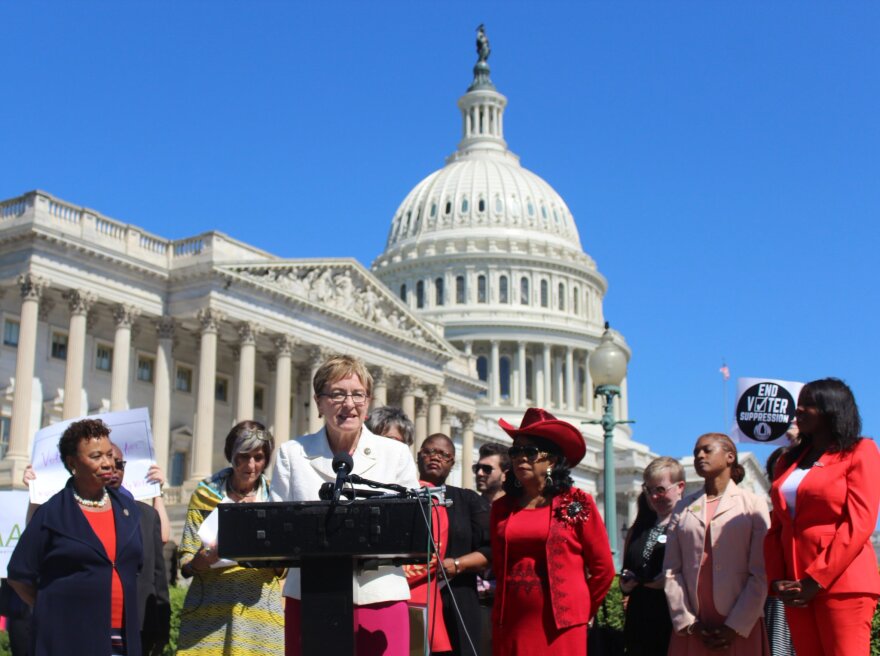“Redistricting, which is the most fun anyone can ever have in politics and not go to prison.”
Those are the words of state Sen. Jeff Jacobson (R-Vandalia), who joked about the challenge of drawing maps for Ohio’s Congressional districts in his farewell speech to Statehouse colleagues in December 2008.
Three years later, state lawmakers would approve a map that, just last year, former state Rep. Mike Curtin (D-Columbus) would describe this way: “This is the most extreme gerrymandered map in Ohio has had in its history, and it’s one of the five most gerrymandered maps in the country.”
Ohio’s Congressional map is now likely headed to the U.S. Supreme Court, after a panel of federal judges ruled it’s unconstitutionally gerrymandered to favor Republicans.
When the new map was created in 2011, Ohio’s population had fallen, costing it two seats in Congress. Lawmakers drew district lines to pit two pairs of U.S. Representatives against each other in 2012. Republican Jim Renacci defeated Democrat Betty Sutton in their new district in northeast Ohio, and Democrat Marcy Kaptur beat fellow Democrat Dennis Kucinich in the strangely shaped district nicknamed “the snake on the lake.”
Since then, the map has brought the same result every two years: 12 Republican representatives and four Democratic ones.
But the map was agreed upon in a bipartisan deal within the Republican-controlled legislature. More than half of Democrats in the House voted for it, along with four of 10 Senate Democrats.
One of those opposed was veteran state Rep. Bob Hagan (D-Youngstown), who left the House in 2014.
“We should think about what we’re doing – what we’ve done,” Hagan said. “Was it fair that some of these districts were carved up in a way that really diluted the opportunity to represent them in Congress?”

Democrats engaged in partisan redistricting too. Then-state Rep. Matt Huffman (R-Lima), who was the map bill’s sponsor, said Democrats could have supported a Republican-backed redistricting reform plan in 2010.
“To simply suggest that somehow the blame lies on this side of the aisle is false. And those who are suggesting that know that,” Huffman said.
That proposal was floated by Lt. Gov. Jon Husted, then a state senator. When the 2011 map was created, Husted served as Secretary of State. He’s been a longtime critic of partisan redistricting, and in 2016 blamed the process on officeholders – and not just state-level ones.
“Those are not the kind of conversations, if you’re a legislator, that you want to have because the top federal elected official in your district doesn’t want you to have them,” Husted said.
That’s what state Rep. Jack Cera (D-Bellaire) says too. Cera’s first vote when he was appointed to the House in 2011 was on that map.
Cera says minority leadership suggested it was the best deal they could get to take care of their sitting members of Congress until something else was worked out.
“In hindsight, I’ve wondered – especially when I was involved in the workgroup on redistricting – why I ever voted for that map,” Cera said.
Democrats blasted the map for years, and recently they’ve been joined by the Republican governor who signed the map into law, John Kasich.
The instant criticism of the map in 2011 sparked demands for a new redistricting process. That came to fruition last year, when voters overwhelmingly approved a plan created by a bipartisan group of lawmakers.

The amendment says when state lawmakers draw a new map after the 2020 Census, they can’t split most counties, and no county can be split three times. For a map to last a full decade through the next Census, it must get 50 percent minority party support, or it will be drawn by a seven-member bipartisan commission.
Ohio Attorney General Dave Yost requested an emergency stay of the court ruling, which was rejected by the same judges on Thursday. He’s now planning to appeal to the Supreme Court, which is currently considering two other partisan gerrymandering cases.
Republican Secretary of State Frank LaRose, who also voted for the map when he was a state senator, supports the appeal. He wants a delay in the order to draw a new map next month.
“What we want to see is a stable and reliable process that happens every 10 years,” LaRose says. “And the next time we draw lines hopefully will be in 2021 following the Census when we finally have this bipartisan process.”
The court's deadline to draw a new map is June 14 – which is just two weeks before the state budget deadline.



